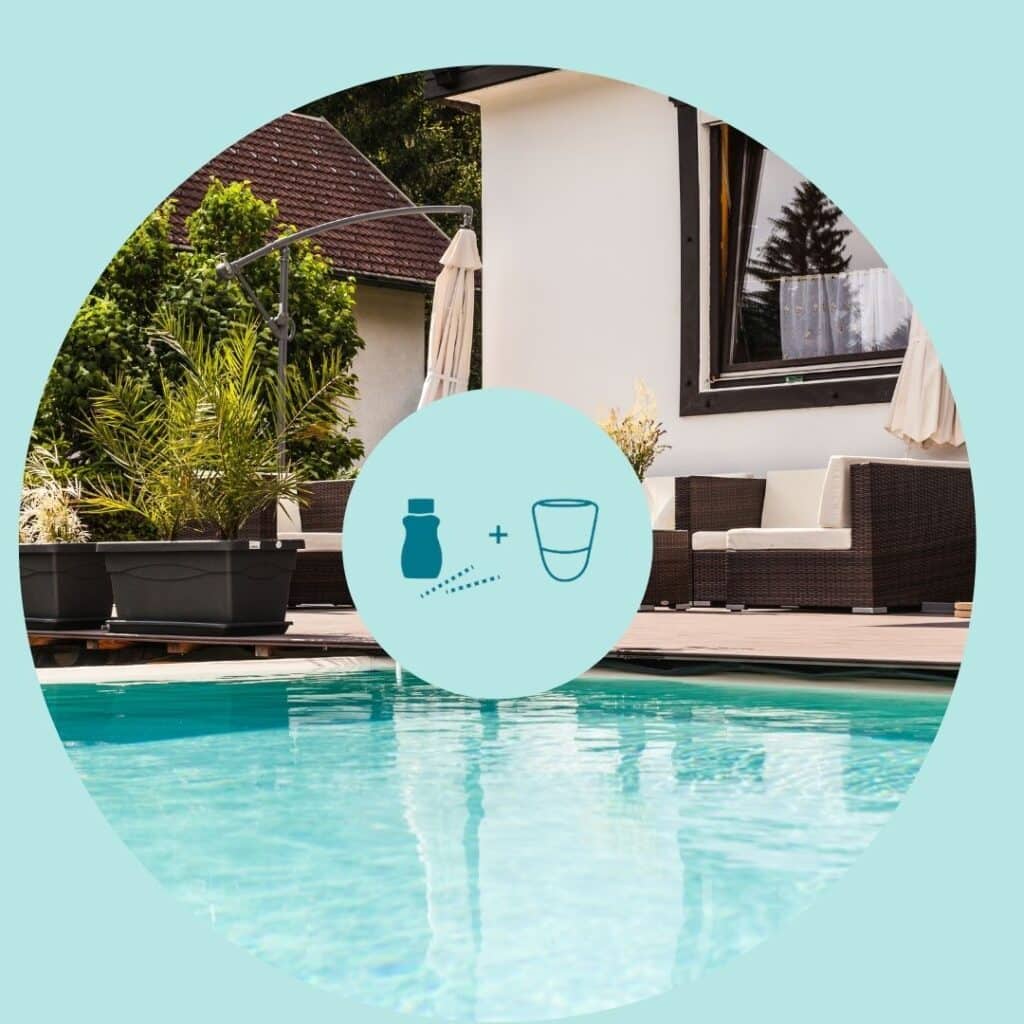In this article, you'll find a practical guide explaining the parameters and frequency of measurements you need to take to analyse your pool water. Then we give you precise answers about the thresholds to be respected for each parameter in order to maintain water quality. Finally, we present the different measuring tools with their advantages and disadvantages.

The balance of water in a swimming pool depends on 3 key parameters: pH, TAC and TH. These 3 factors are closely linked. Water balance is essential to ensure water hygiene, bather comfort and equipment protection.
In order to maintain water balance, disinfection needs to be monitored.
The challenge is to maintain a balance between three different parameters: the acidity, alkalinity and hardness of the water.
All about balancing swimming pool water
Regular analysis of swimming pool water is essential to protect the health of bathers, guarantee crystal-clear water and ensure the longevity of equipment.
The water in your pool is constantly changing. Several factors influence water quality. The frequency with which pool water is analysed and checked depends on factors such as the season, the number of bathers and the weather conditions. Depending on the weather, the temperature of the water, the environment around your pool and the number of bathers, the water can deteriorate. To maintain the quality of your pool water, it is essential to analyse it regularly.
During periods of heavy use or if the weather is particularly changeable (high heat, rain), it may be necessary to test the water more frequently to prevent any imbalance.
In the high season, your pool water needs to be analyzed on a regular basis. This allows you to intervene quickly with the right treatment, so you can continue to enjoy your pool every day.
Stabiliser levels (cyanuric acid) is a parameter that should be tested (chlorine or salt pools). The ideal level is between 20 and 50 mg/L. Above this level, your water risks becoming over-stabilised. An overdose of chlorine makes it ineffective, leading to the proliferation of bacteria, algae and fungi.
To test the various water parameters, you can choose between the manual method with test strips and electronic testers, or the automatic method with connected water analyzers.
To test pH, for example, you can opt for a chemical reaction strip, a ph-meter, which is a handheld probe, or a connected water analyzer. Please read our comparison of pH measurement tools.
Test strips, which are the most affordable in terms of price (between 20 and 30 euros cents per test), give results that are more or less reliable and precise. In fact, reading the result is an interpretation of the color indicated. If your water needs chemical treatment, it will be difficult for you to know what dosage of product to add.
There are, however, test strip readers available. Once the test strip has been dipped in water, the required values are displayed digitally on the screen. This compensates for any misinterpretation of colors. It's an additional investment (approx. 100 euros) that can prevent many misinterpretations and, above all, over-consumption of chemical products.
There are specific strips for each disinfection method: chlorine, bromine, salt or active oxygen. Depending on the brand and the product, the products can analyse from 4 to 7 parameters. To obtain reliable results, store them at room temperature, close the cap tightly and do not exceed the expiry date.
Electronic testers or probes are much more reliable, but it's best to avoid the low-priced gadgets. These devices allow you to read a very precise digital result. However, they need to be calibrated regularly (depending on the model). You can ask your specialist for advice, as he or she is familiar with specialist pool brands.
Finally, some testers analyze only one parameter (pH or ORP), while others allow you to test several water parameters, which is more economical and, above all, more practical!
For the past five years, the market for connected sensors has been booming. The key benefit of these devices is their ease of use, since the main parameters of your pool water are measured automatically every day, several times a day. Some connected sensors like ICO Pool give you access to the results of your measurements on your smartphone, along with chemical treatment recommendations with the right dosage. Thanks to ICO, pool maintenance tips, such as filtration or winterization, save users a lot of chemicals and time! Read the comparative report on connected probes.
Before comparing the various pool analysis tools, it's important to remember that whatever the method used, it's important to carry out the analyses under the right conditions to obtain reliable results.
Whether you use a colorimetric strip or an electronic tester, here's how to do your test:
To keep your pool water balanced, good pool maintenance is just as essential as regular water analysis. Maintenance must be regular (at least weekly in high season) and thorough: from cleaning the walls and water line to cleaning or replacing filters and pre-filters. On average, 30 minutes of maintenance every week is enough to keep your water crystal-clear. All you have to do is enjoy your bathing!